InterviewsA Marine Life: The Art of Brittany March

Of the ones who are fortunate enough to grow up by the sea, few tap into the early influences the marine environment instils in us, let alone process and externalise them. But those who do often discover just how much the sea has shaped them as a person, sometimes providing the components and stimulus to create something that pays tribute to this part of the natural world and that others can relish.
Brittany March set out on the path to make oceanic art from an early age. Growing up in South Australia, in a house that was practically on the dunes and in a family that made their living from the sea, she was quite literally surrounded by the ocean.
“I’ve been told as a baby I loved being held over the side of the boat so I could see the dolphins, but I was too young to remember. I don’t recall my earliest memory of the sea, it was never not a part of my life.”
Always with a pencil in hand and fascinated by all kinds of animals (“It wasn’t uncommon for me to be nursing a number of different injured animals back to health at any given time”), she took advantage of an artistically inclined father and an overall supportive family to bring those childhood drawings to another level.
“Fortunately, both my parents encouraged my endeavours. I’ve heard of parents steering their children away from creative careers because ‘they’re never going to earn any money’ which is quite sad, to discourage a child’s passion because of an adult’s fear.”
She chose to study Visual Communication, but later realised her choice of degree may not have been in consonance with her choice of lifestyle, as she “love[s] being outside and found computers boring.” Nevertheless, this academic interim has worked out as an asset: it broadened her capabilities and mindset, and instilled in her the skill sets that set in motion her up-and-coming career as an artist.
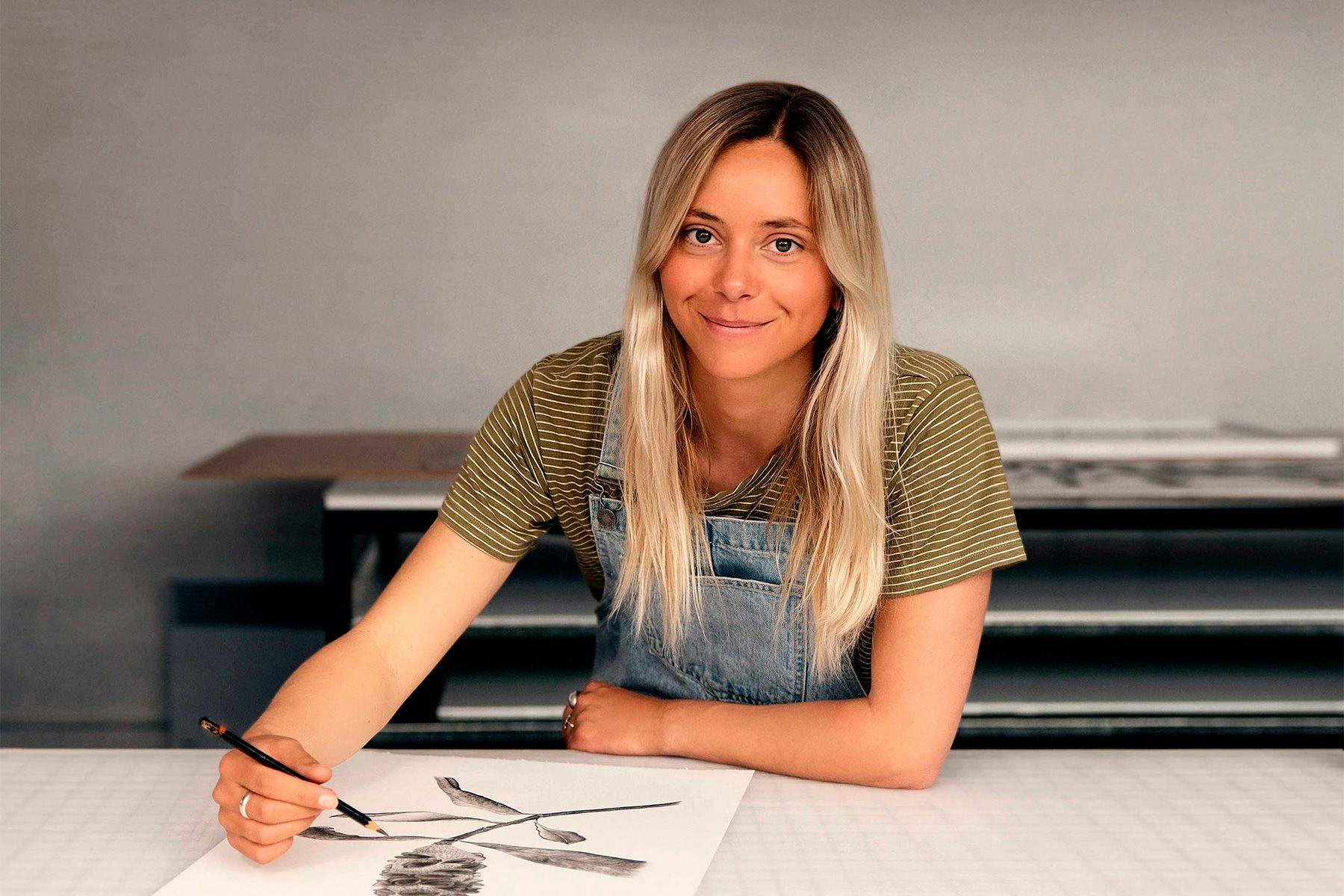
Last year you branched off your career as a graphic designer and illustrator to pursue a passion for fine art, creating highly-detailed realistic pencil and charcoal drawings. Can you please run us through this transition?
Graphic design and fine art, although they are both creative pursuits, are very different. Graphic design is time crunching, fast-paced and commercially driven. Fine art comes from the heart and is an expression of self.
Ultimately, the transition came about when I found myself in a job that I hated and which conflicted with my ethics. I was working as a graphic designer in the fast-fashion industry; it’s hard to have an ecological mindset and work in an industry that encourages consumerism. So, I quit my reliable, full-time job to pursue my own path.
Since going out on my own, I’ve been able to show the world more of what I have to offer. When you work for an employer or a client you don’t always have the luxury of creating work that you want to, so in some ways that can be limiting.
I still love the strategic aspect of design and visual problem solving but fine art has given me a creative outlet and a way of putting a piece of myself onto paper. When I create fine art I don’t work to the clock – I put as many hours into a piece as I need to. I feel fortunate to spend time creating something special that people will cherish for a lifetime. It’s a labour of love.
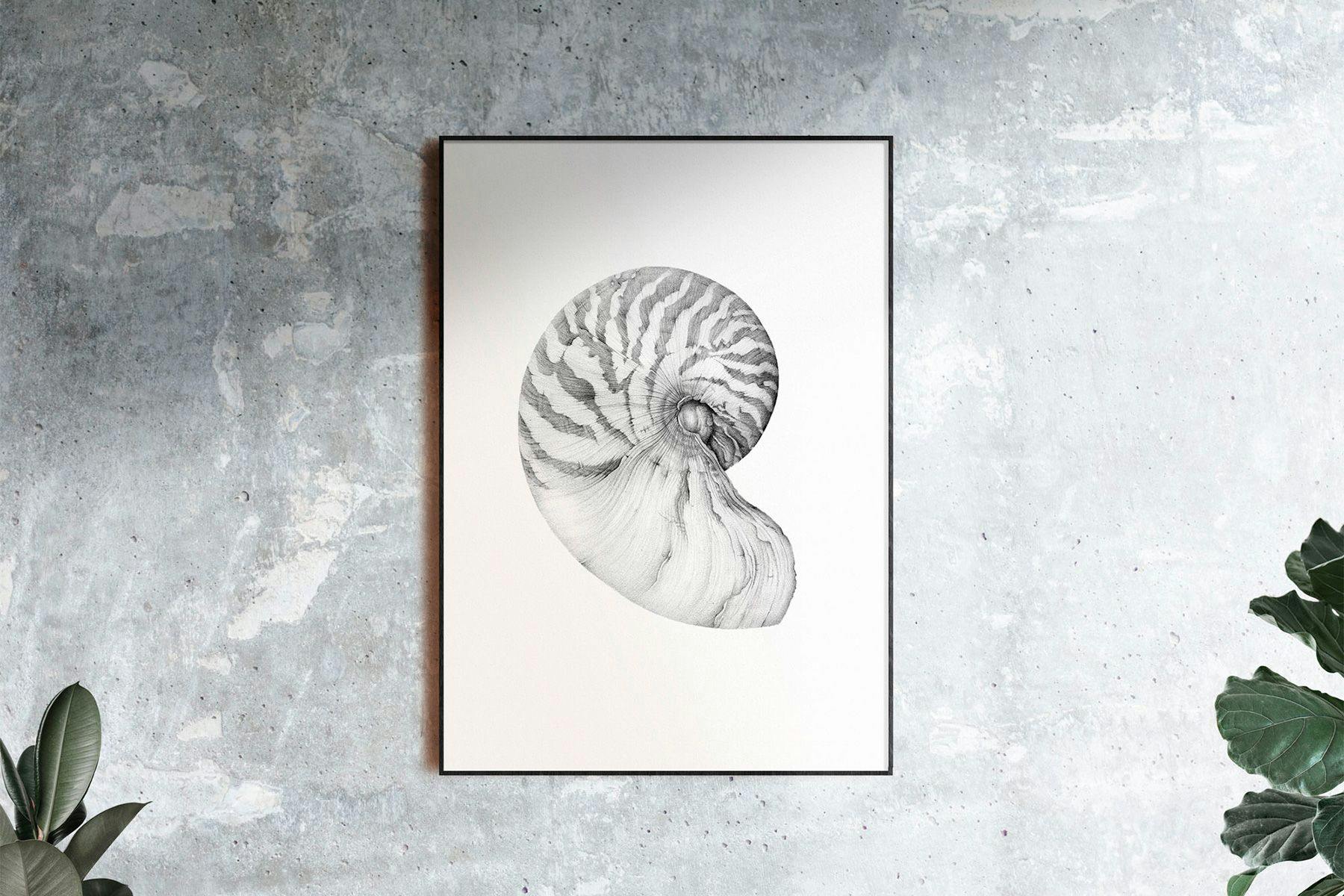
How do your training and previous experience as a graphic designer influence your work as an artist? And what is the most interesting part of each?
As an artist, I’m drawn to traditional materials and creating artwork organically. My work as a graphic designer and illustrator was predominantly working digitally. When you work for someone else, more often than not you’re working to a tight budget and are held to time constraints. Working with traditional materials typically takes longer. For this reason, I haven’t always had the opportunity to explore creating work organically. Fine art is my creative outlet: I’ve always loved working with my hands so when I get to move away from the screen and put pencil to paper, it’s highly rewarding.
Graphic design involves a lot of strategic thinking and visual problem solving, which I love. Every decision you make is purposeful and I believe it is more closely aligned with the social sciences than artistically influenced. I do have quite a methodical approach to my design work. Good design isn’t about creating something that simply looks cool, it has an objective and needs to serve a purpose.
My approach to my artwork is a little different. It’s still very methodical but in a completely different way. Ultimately, it comes from the heart and I hope my artwork builds an emotional connection with the viewer. I love working organically because it’s more challenging. There’s no ‘command z’ if you make a mistake or tricks to speed up the process. Every element on the paper I’ve created by hand and has been carefully considered. What I find interesting about fine art is the way people study a piece, sometimes with a lot of intensity. People seem to appreciate the level of detail and time it takes an artist to achieve that.
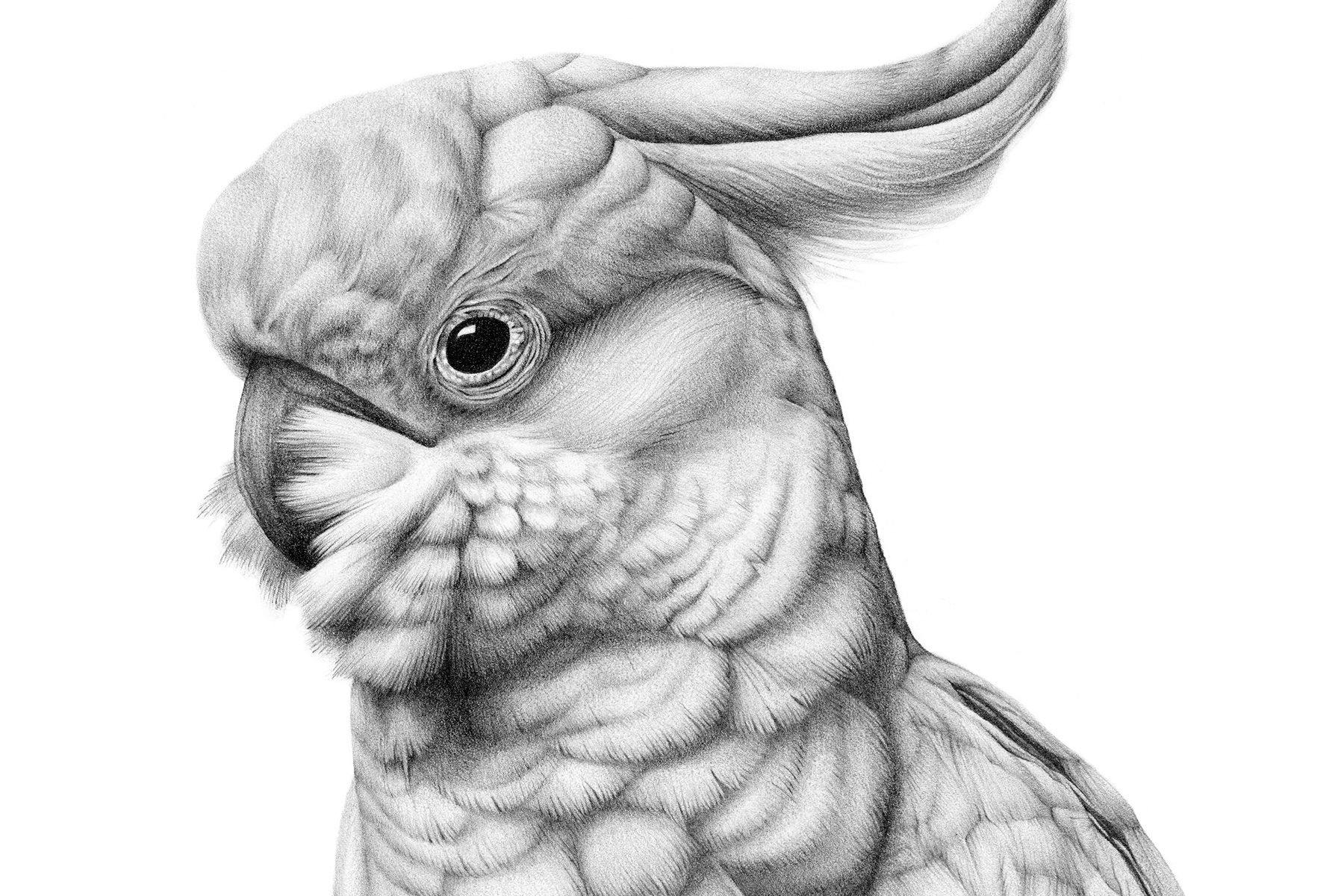
You have chosen pencil and charcoal as your primary mediums. How come? And how different are them from each other?
I like the level of detail and precision that can be achieved with both mediums. Time and scale are the deciding factors I consider when choosing between pencil and charcoal. Pencil is a great medium for very fine, intricate work. The drawback is, it’s quite time-consuming so for larger pieces, I switch to charcoal because I can cover a larger area more quickly. Because of the way I work with charcoal, and the level of intricacy I want to achieve, it’s still not a quick process but it wouldn’t be feasible in pencil.
You’re currently working on your marine life series, featuring fauna and flora from the ocean’s depths and coastal regions. How do you choose the subjects of your drawings? And what is your process like?
My inspiration for choosing a subject is constantly changing, as does my process, depending on what I’m drawing. A large-scale charcoal piece requires a different method than a smaller piece in pencil. As does the research element, depending on the subject matter.
Artists who draw in the realism style will typically work from a reference image or a series of images. I always try to source and photograph what I can, although some subjects prove more difficult than others. The seedpod for my banksia piece was carefully considered and collected from my neighbour’s garden. I spent a considerable amount of time choosing one that would create the right composition and took a number of photographs before settling on one I was happy with. As much as I would love to photograph humpback whales it’s not something I can easily do, so I found a beautiful image from Jeremy Cresswell and he kindly permitted me to use it as a reference.
In both instances, I’ll start with a preliminary sketch, which is almost like the bones of your drawing. This is probably the most crucial part because if it’s off from the start, the end result is going to look off. For larger pieces, I’ll work sitting or standing at my easel and for smaller pieces, I’ll work at my drawing table. The easel is great when I’m working on a large piece because I can take a step back and see the whole image taking form, and come in closer to work on the details.
After the preliminary sketch, I put down the base layer, starting with the shadows and then moving into the lighter areas. This step involves a lot of blending to build form. Then it’s just a matter of adding shadows and subtracting highlights repeatedly, which creates depth and details.
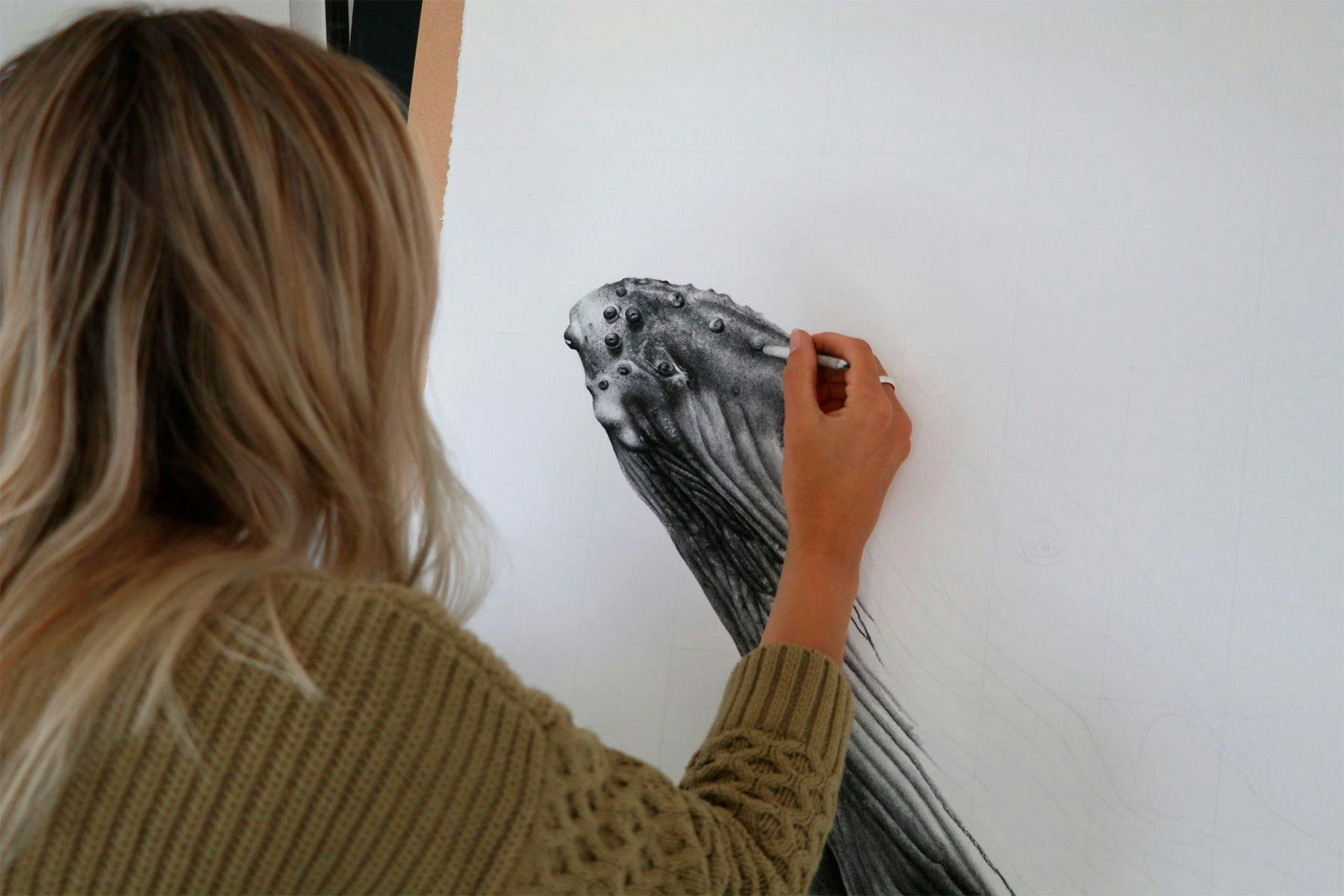
Can you please tell us a bit about the humpback whale piece you’re currently working on?
I’m working on a large humpback whale piece in charcoal. So far it has been a bit of a challenge because of its size and the amount of detail I want to put into it. The composition itself is a little more complex. I’m focussing on the underside, so its stomach and neck are the focal points. If you’re not familiar with humpback whales, they have a lot of intricate details in this area. So for me, that involves a lot of precise line-work that has to line up, leaving little room for error.
I often have a newfound appreciation for a subject once I begin drawing it. What I find particularly interesting about an animal or plant is how its shape suggests the way it acts or its function. You can learn a lot about a subject when you study it intently for hours. I also find I pay attention to the little things which I may have easily overlooked if I wasn’t looking at the subject purposefully. The humpback whale piece is a good example of this. I’m paying attention to the tiny dimples that cover its belly or the scratches on its skin that tell a story about where it has been. Or even more simply, how the shape of its body suggests it’s able to travel long distances in open water. Contradictorily, when I studied the great white shark, its shape suggests power and speed.

Although you grew up by the sea, it wasn’t within easy access to surfable waves. How did surfing come into your life, and how does it relate to your artistic practice?
Learning as an adult meant my earliest surf experiences involved a lot of trial and error, but mostly error. When I moved to Torquay along the Great Ocean Road in Victoria I caught a wave that changed my outlook on surfing, and subsequently many life decisions since. Torquay is the surfing mecca of Australia and we’re really spoilt for choice around here, provided you don’t mind cold water!
My inspiration has always come from the sea. Surfing is another avenue that allows me to spend time in the water. For me, surfing isn’t so much about the technical aspect. Sure, I want to keep progressing but its more about having a connection to nature, being out in the elements, feeling the energy from a wave, paying attention to the tide and the wind, and experiencing wildlife in the wild. I feel the interactions I have with marine life in the water greatly influence my work. I can’t imagine there’s anyone out there who can ignore a real connection they’ve had with a wild animal and not have it change them in some way. There’s so much beauty in the ocean and I just try to put a bit of that back into my work.
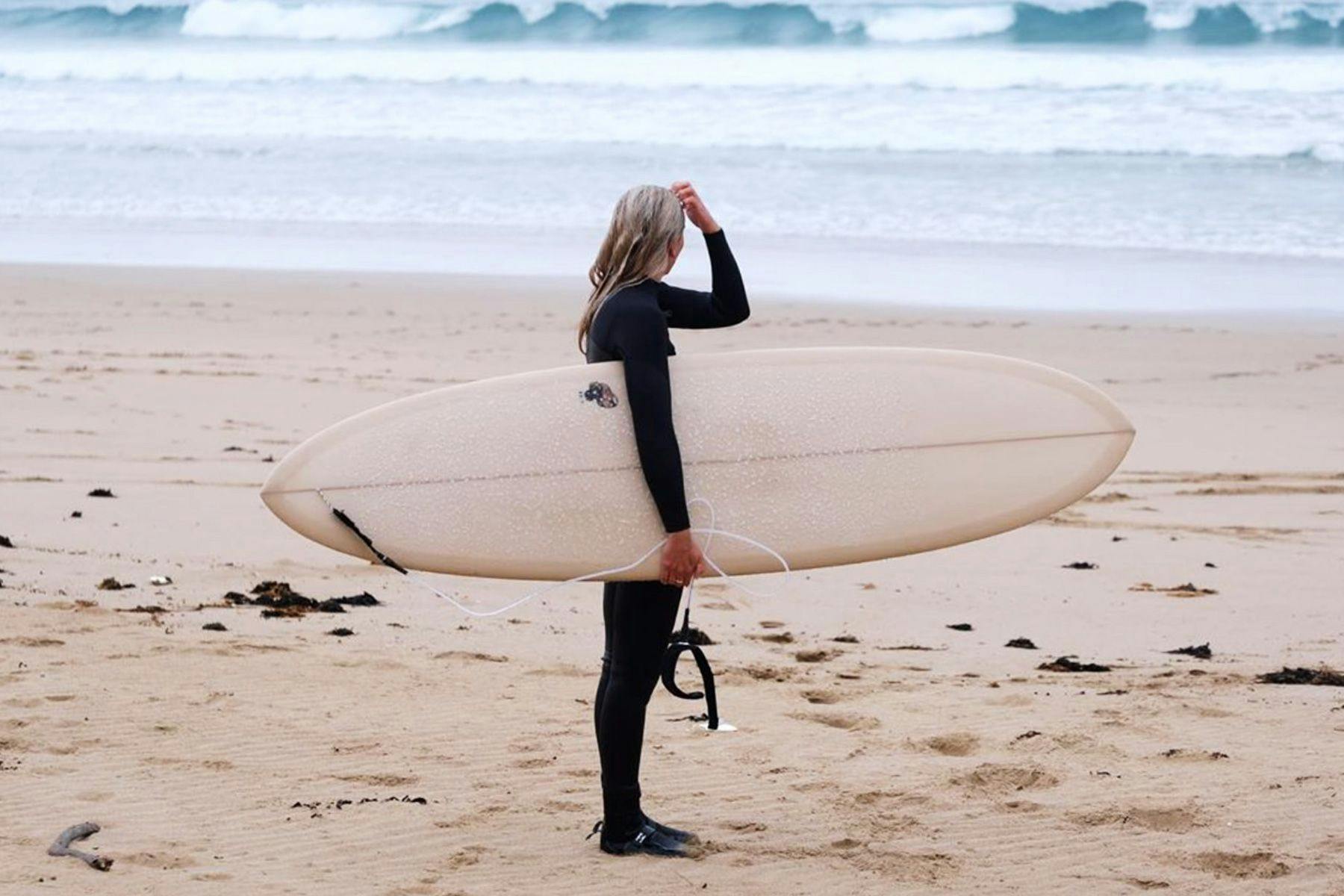
In some ways, the freedom of being a freelancer suits a surfer’s lifestyle down to the bone – to be able to hit the brine when the swell is up and head back to work when the wind picks up. Yet, freelancers know it’s not always all that simple. How do you manage your time in the water and in the studio?
Admittedly, I do get a lot more work done on days when there are no waves. Fortunately, I am quite driven and passionate when it comes to my work so I don’t find it overly difficult to manage my time. Typically, I’ll aim to have a number of jobs completed each week and plan my days accordingly. Some days I might go for an early session and start work during the mid-morning. Other days, I’ll start work early and go for a surf in the afternoon. There might be days when it’s howling onshore and pelting down rain, so I use that time to my advantage by getting as much work done as I can. I highly value my time outdoors and in the water and consider it a way to maintain a healthy mind and body. I don’t do well being confined to a desk for eight hours a day. The beauty of freelancing and being self-employed is having the freedom to choose how I spend my time.
So far, your fine art (oeuvre) encompasses mainly depictions of marine and coastal wildlife, a chain of species highly susceptible to the several threats faced by our oceans. As an artist, what are some thoughts/emotions that emerge when in contact with these matters? Is there a particular message you’d like to convey?
Overall, I think humanities attitude towards conservation is changing and our understanding of our impact on the earth is becoming more widely known. Where I live, it’s not uncommon to see people collecting and disposing of rubbish they find on the beach or standing up to oil companies who want to exploit our natural resources. For me, it demonstrates how our collective mindset is evolving. I hope my artwork builds an emotional connection with the viewer. If you’re connected to these species in some way, you will more likely want to protect them. I’m also highly conscious of the way I produce my art and run my business. I’m constantly looking at ways I can reduce waste, using environmentally responsible materials, choosing to work with local businesses who also have an ecological mindset and ultimately, producing work that’s intended to last a lifetime. This goes against the mass-produced, throw-away culture, we as a society, need to transition away from.

Similarly, as a surfer, what are some things that this time in the ocean has taught you about marine life – and life in general?
If you pay attention when you enter the water, there’s a whole world of life surrounding you. Where I grew up in South Australia, I would often enjoy kayaking on my own and with Peaches, my dog. I loved how silent it was, floating out there without all the human clutter. I would only hear the sound of the water moving underneath my boat. We had a lot of interactions with marine life. We would experience the loud snort and see the spray from a seal that had just surfaced next to us, from seemingly out of nowhere. We would see stingrays at the sandy ocean floor, paddle till we were almost on top of them, and then watch them flicker away. There were often dolphins, sea birds and numerous kinds of fish. Spending time alone in the water gave me opportunities for self-discovery, made me in tune with my surroundings and aware that humans aren’t apart from the world – we’re just another animal in it.
Surfing has taught me humility and patience, above all else. Being at the whim of a force greater than yourself can be a humbling experience. Patience is a skill a lot of surfers and ocean enthusiasts have to practice, reluctantly or not because the conditions aren’t always going to be your idea of perfect.
Finally, what is on the horizon for you – what would you like to explore next in your art and surfing?
I’m currently preparing for exhibitions booked later in the year. I would like to further connect with other artists, creatives and passionate people to build upon my creative network. I’m also looking forward to travelling in more depth and with my surfing, it’s just about having fun.
For more of her artwork, follow Brittany on Instagram or check her website to purchase one of her drawings.